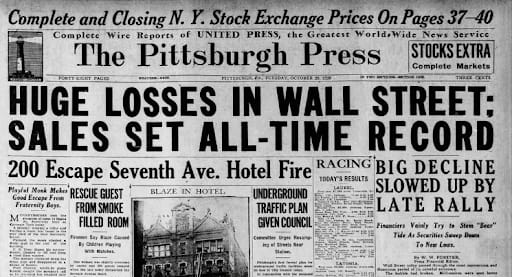- Live Life Grow Wealth
- Posts
- 💹 Series 8 Day 6: Combining Technical and Fundamental Analysis
💹 Series 8 Day 6: Combining Technical and Fundamental Analysis

Today’s Headline
💹 Series 8: Mastering Technical Analysis
Day 6: Combining Technical and Fundamental Analysis
How to See the Whole Picture Before You Invest
When I first started investing, I used to think I only needed to choose one method.
Either I learn charts… or I learn company fundamentals.
But over the years, I realised something powerful: the best investors don’t pick one.
They combine both, and that’s when everything starts to make sense.
In today’s lesson, I want to show you how to blend technical and fundamental analysis so you can see the whole story behind a stock.
Think of it like looking at a car.
Fundamentals tell you how strong the engine is.
Technical analysis tells you whether the traffic light is green or red.
When you put them together, your confidence grows.
Your decision-making becomes sharper.
And your chances of making money improve because you’re not guessing anymore.
You’re following evidence.
Crash Expert: “This Looks Like 1929” → 70,000 Hedging Here
Mark Spitznagel, who made $1B in a single day during the 2015 flash crash, warns markets are mimicking 1929. Yeah, just another oracle spouting gloom and doom, right?
Vanguard and Goldman Sachs forecast just 5% and 3% annual S&P returns respectively for the next decade (2024-2034).
Bonds? Not much better.
Enough warning signals—what’s something investors can actually do to diversify this week?
Almost no one knows this, but postwar and contemporary art appreciated 11.2% annually with near-zero correlation to equities from 1995–2024, according to Masterworks Data.
And sure… billionaires like Bezos and Gates can make headlines at auction, but what about the rest of us?
Masterworks makes it possible to invest in legendary artworks by Banksy, Basquiat, Picasso, and more – without spending millions.
23 exits. Net annualized returns like 17.6%, 17.8%, and 21.5%. $1.2 billion invested.
Shares in new offerings can sell quickly but…
*Past performance is not indicative of future returns. Important Reg A disclosures: masterworks.com/cd.
Why You Shouldn’t Choose Just One Method
There are investors who only use fundamentals.
They look at financial statements, profits, growth rates, and valuations.
These investors can tell you whether a company is healthy.
Then there are technical traders.
They watch charts, indicators, price patterns, and market conditions.
These traders can tell you whether the market is ready to move.
But here’s the truth:
A strong company can still fall in price, and a weak company can still rise in the short term.
That’s why I prefer combining both.
It gives you a balanced view.
It helps you avoid buying too early or too late.
It helps you stay calm when the market gets noisy.
The Best Way to Think About This Combination
Here’s the simple rule I follow:
Fundamentals tell me what to buy.
Technical charts tell me when to buy.
That’s it.
Two tools.
Each one doing what it does best.
When you follow this rule, you’ll find it easier to filter out bad stocks and avoid emotional decisions.
Step 1: Use Fundamental Analysis to Choose Quality Stocks
Before I even look at a chart, I want to know if the company is worth owning.
I don’t care how good a price pattern looks if the company has:
Weak profits
High debt
Failing business model
Declining growth
A beautiful chart cannot save a broken company.
So here’s what I look for in fundamentals.
And don’t worry — I’ll keep it simple.
1. Growing Revenue
I want to see the company making more money over time.
If revenue keeps rising, it means demand is strong.
2. Consistent Profit
A business must earn real profit to survive.
If profits are growing steadily, that’s a very good sign.
3. Manageable Debt
Too much debt is a burden.
Companies with too much debt struggle during bad times.
4. Strong Competitive Advantage
This is what gives a company power.
Good examples include strong branding, patents, large market share, or technology no one else has.
5. Good Management
A company is nothing without leaders who make smart decisions.
This is one of the most underrated factors in investing.
If a company has all of the above, I move on to the charts.
If not, I skip it immediately.
Step 2: Use Technical Analysis to Time Your Entry
Once I know a company is fundamentally strong, I check the chart to decide when to enter.
This part helps me avoid buying during a crash or when the price is overvalued.
Here are some of the simple technical tools I use.
1. Trend Direction
Is the stock trending up, down, or sideways?
I prefer buying in an uptrend because momentum is on my side.
2. Support and Resistance Levels
Support = where price tends to bounce.
Resistance = where price tends to fall.
If a stock is near support and fundamentals are strong, it may be a good buying zone.
3. Moving Averages
These help me see the overall direction.
A stock trading above its moving averages is usually healthier.
4. Indicators Like RSI or MACD
I don’t rely heavily on indicators, but they help confirm momentum.
If the stock is rising with strong volume, it’s an even better sign.
5. Price Patterns
Patterns like breakouts, pullbacks, or consolidations help guide me on the exact timing.
Once the technical signs match the fundamentals, that’s when I take action.
This combination makes me feel much more confident because I’m not betting blindly.
Why Combining Both Makes You a Safer Investor
Let me share something I learned after watching hundreds of investors.
Those who only use fundamentals often enter too early.
Those who only use technicals often enter too late.
But when you use both:
You get fewer bad surprises.
You make clearer decisions.
And you stay emotionally calm.
Why?
Because you know the company is strong and the price action supports your move.
This reduces fear.
This reduces overthinking.
This reduces panic during market drops.
$6B Team Just Unleashed Cinderella on a $2T Market
Cinderella isn’t looking for her glass slipper— she’s busy smashing the $2T media market to pieces.
Elf Labs spent a decade at the US Patent & Trademark office in a historic effort to lock up 100+ historic trademarks to icons like Cinderella, Snow White, Rapunzel and more — characters that have generated billions for giant studios. Now they’re fusing their IP with patented AI/AR to build a new entertainment category the big players can’t copy.
And the numbers prove it’s working.
In just 12 months they raised $8M, closed a nationwide T-Mobile–supported telecom deal, launched patented interactive content, and landed a 200M-TV distribution partnership.
This isn’t a startup. It’s a takeover. And investors are sprinting to get in.
Lock in your ownership now
This is a paid advertisement for Elf Lab’s Regulation CF offering. Please read the offering circular at https://www.elflabs.com/
How to Practice This in Real Life
Here’s a simple 3-step routine you can follow.
Anyone can do it.
Step 1: Build a Watchlist of Strong Companies
Choose a few companies with good financials.
Make sure they have growth potential and stable performance.
Step 2: Check Their Charts Weekly
Look for:
Uptrend
Pullback to support
Breakout above resistance
Healthy volume
You don’t need to check every day.
Weekly is enough.
Step 3: Wait for Technical Confirmation
If fundamentals are strong but technicals are weak, wait.
Patience pays off.
Once the chart confirms strength, you enter with confidence.
A Real Example of How This Combination Works
Imagine you find a company with strong fundamentals.
The revenue is growing.
The profit margins are stable.
The debt is low.
The management is experienced.
That sounds great — but the stock is in a downtrend.
If you buy now, you may suffer more losses before it turns around.
Now imagine the same company.
But this time, the stock is forming a higher low.
Volume is rising.
Momentum indicators show strength.
Resistance is about to break.
Now your chances improve dramatically.
That’s the power of combining both methods.
You avoid pain.
You avoid emotional decisions.
You follow logic.
The Biggest Mistake Investors Make
The biggest mistake is thinking you must pick a side.
Some people say charts are useless.
Others say fundamentals move too slowly.
But the truth is simple:
Both are useful when used correctly.
Technical analysis helps you see crowd behavior.
Fundamental analysis helps you see business reality.
Together, they create a complete picture.
When Fundamentals and Technicals Conflict
This happens often.
And here’s how I handle it.
If fundamentals are strong but chart is weak:
I wait.
A falling stock can keep falling.
If fundamentals are weak but chart looks strong:
I skip.
A weak company will eventually show cracks.
If both look strong:
That’s when I take action.
Building Your Long-Term Investing Skillset
The more you study charts and fundamentals, the easier it gets.
You’ll start to spot patterns.
You’ll start to filter stocks faster.
You’ll feel more confident with each decision.
This combination also helps you:
Avoid hype
Avoid emotional mistakes
Avoid buying at the wrong time
Avoid holding weak companies
Avoid panic selling
Investing becomes less stressful because you're basing your decisions on evidence, not on feelings.
My Final Advice to You Today
If you’re serious about growing your wealth, don’t rely on just one method.
Learn both — even at a basic level.
You don't need to be an expert.
You just need to be consistent.
Over time, you’ll develop an instinct that tells you:
“This company is strong.”
“This chart looks ready.”
“This moment feels right.”
And that instinct comes from combining skills, not guessing.
Final Takeaways
Use fundamentals to choose strong companies.
Use technicals to time your entry.
Use both to protect your money and grow it steadily.
This combination is one of the secrets behind long-term investing success.
📢 Call to Action
If today’s lesson helped you see investing in a clearer way, keep going.
You’re already ahead of many new investors.
Tomorrow, I’ll share more strategies to help you read the market with confidence.
But for now, I want you to take action:
👉 Pick one company you like.
Check its fundamentals.
Then study its chart.
Apply everything from today.
That’s how you turn theory into real skill.
You're on the right path — and I’m here to guide you all the way.
[Live Life Grow Wealth]
🎓 Free Masterclasses to Unlock Your Investment Potential
Take your money skills to the next level with expert-led workshops designed to help you grow smarter and faster.
Recommendations Section
“Peek into smart money moves — when big players act, you’re in the loop.”
|
Learn simple, proven ways to grow your money — straight from real investors who walk the talk.
|
“Hone your investing edge in just 5 minutes — smart, snappy insights to power your portfolio growth.”
|
“Stay ahead with one expert-picked stock monthly — clear, no jargon, built for growth.”
DISCLAIMER
I make no representations, warranties, or guarantees, whether expressed or implied, that the content provided is accurate, complete, or up-to-date. Past performance is not indicative nor a guarantee of future returns.
I am an individual content creator and not regulated or licensed by the Monetary Authority of Singapore (MAS) as I do not provide investment services.
All forms of investments carry risks, including the risk of losing your entire invested amount. Such activities may not be suitable for everyone. You are strongly encouraged to seek advice from a professional financial advisor if you have any doubts or concerns.








